What If History Happened?
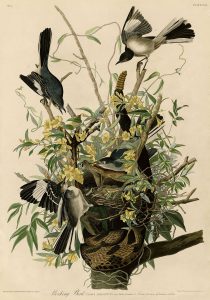
AI: John Audubon, Florence Bailey, Roger Peterson, and Phoebe Snetsinger Compared: Birdwatchers 🐦🦃🦅🦜🦉🦚🦤🦩🐧🪺
“When the bird and the book disagree, believe the bird.” – John James Audubon
“The student who goes out with a gun[Audubon]… sees only the terror of the hunted… but the student who goes out with the opera-glass… learns the secrets of the home life.” – Florence Merriam Bailey
“Birds have wings; they’re free; they can fly where they want when they want. They have the kind of mobility many people envy.” – Roger Tory Peterson
“If it’s my last trip, so be it—but I’m going to make it a good one and go down binoculars in hand!” – Phoebe Snetsinger (She was tragically prophetic; she died in a vehicle accident in Madagascar while on a birding tour, less than two hours after seeing her final life bird, the Red-shouldered Vanga.)

AI: Mary Anning, Richard Owen, Othniel Charles Marsh, and Edward Drinker Cope Compared: Early Dinosaur Bones 🦕🦖🦎🦴
“I beg your pardon, there are no such things as fancy stones. They are all organized substances—petrified bones of animals that existed before the Flood.” — Mary Anning, her correction to a customer.
“The greatest anatomist of his age… He loved Nature and Art, and he built this [London Natural History] Museum to be their home.” — Richard Owen
“Bone Wars”, Othniel Charles Cope versus Edward Drinker Marsh:
“He [Cope] has repeatedly published as his own discoveries the work of others, and has shown himself capable of the most flagrant violations of scientific etiquette and truth.”
“Marsh is simply a scientific political wire-puller… He is not a naturalist in any proper sense of the word. He has published very little work that is his own.”
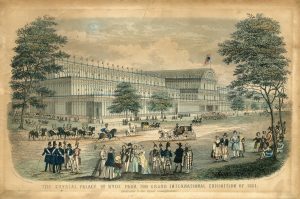
AI: The World Fairs 🏛️ London 1851,🗼 Paris 1889, 🎡 Chicago 1893, 🚀 New York 1939-40, and 🌍 Montreal 1967 Compared
“We are living in a period of the most wonderful transition… The distances which separated the different nations and parts of the globe are rapidly vanishing…” – Prince Albert, the chief organizer
“The Tower will be the tallest edifice ever raised by man. Will it not, therefore, be grandiose in its own way?” – Gustave Eiffel, the engineer
“For the visitor, the Chicago World’s Fair of 1893 was a short course in the history of civilization and a glance at the Utopian future, all for 50 cents. Visitors… were introduced to the Ferris wheel, the zipper, Cracker Jack, shredded wheat, juicy fruit gum, and… electric lights.” – Reid Badger, historian
“Today the eyes of all our citizens are on this temple of peace… where the vanguards of a friendly civilization moved forward to the high-road of the future.” – President FDR
“Vive Montréal! Vive le Québec! … Vive le Québec libre!” – Charles de Gaulle
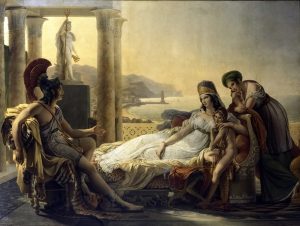
AI: Iliad, Odyssey, and Aeneid Compared: Trojan War (Part III, The Aeneid: “The Founding of Rome”🏛️🛡️👑 💖 🌩️)
“I fear the Greeks, even bearing gifts.” – Laocoön (The Trojan Priest)
“Arise from my bones, you unknown avenger, to hunt the Trojan settlers with fire and sword… Let there be no love between our peoples and no treaties.” – Queen Dido of Carthage
“Roman, remember by your strength to rule Earth’s peoples—for your arts are to be these: to pacify, to impose the rule of law, to spare the conquered and war down the proud.” – Anchises (Aeneas’s father in the Underworld)
“boil with the passion for war” – Allecto (A Fury/goddess of discord)
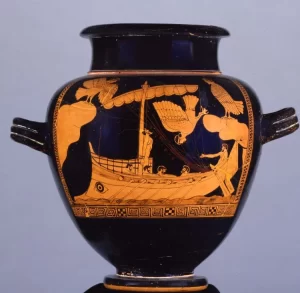
AI: Iliad, Odyssey, and Aeneid Compared: Trojan War (Part II, The Odyssey: “The Long Journey Home” 🌀 👁️ 🐗 🌊 🕊️)
“Sing to me of the man, Muse, the man of twists and turns driven time and again off course, once he had plundered the hallowed heights of Troy.” – Narrator
“My name is Nobody; my father and mother call me Nobody.” – Odysseus’s famous, clever lie to the Cyclops Polyphemus, which he uses to escape the cave.
“By day I’d weave at my great and growing web— by night, by the light of torches set beside me, I would unweave it. Three whole years I deceived them, seduced them with this scheme.” – Penelope
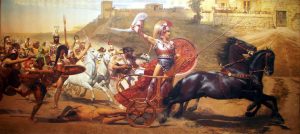
AI: Iliad, Odyssey, and Aeneid Compared: Trojan War (Part I, The Iliad: “The Rage of Achilles” 🔥 ⚔️ ⚡ 👴 👑)
“Sing, O goddess, the anger of Achilles, son of Peleus.” – Narrator
“Let me not die ingloriously and without a struggle.” – Hector
“The gods envy us because we are mortal.” – Achilles
“There is nothing alive more agonized than man.” – Zeus
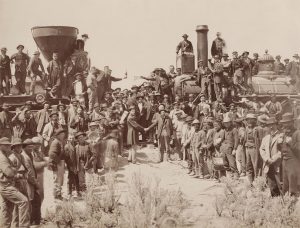
AI: 🎩 Abraham Lincoln, Theodore Judah, Leland Stanford, and Grenville Dodge Compared: Transcontinental Railroad 🚂
“At the height of that war, with unity so much on his mind, President Lincoln sought a way to connect and secure the great expanse of our nation, to unite it entirely, from sea to shining sea.” — Summary of Lincoln’s mindset when signing the Pacific Railway Act in 1862.
“Everything he did from the time he left for California until his death was for the great Continental Pacific Railroad. It consumed his time, money, brain, strength, body, and soul. It was the burden of his thoughts day and night.” — Anna Judah, reflecting on her husband’s singular focus
“The last rail is laid! The last spike is driven. The Pacific Railroad is completed.” — Telegram sent by Leland Stanford, T. P. Durant, and others, May 10, 1869.
“He completely ‘shelled my woods,’ getting all the secrets that were later to go to my [railroad] employers.” — Grenville Dodge, recalling how Lincoln extracted every piece of knowledge he had on the western routes during their meeting in Council Bluffs, Iowa.
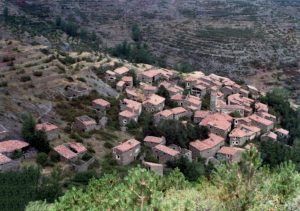
AI: The EU’s Birth Rates 1.46 Live Births per Woman In 2023; Replacement Level of 2.1: Native-born Population in the EU is Shrinking and Aging ⏳
“A change-over from an increasing to a declining population… is what is happening. Certainly, a declining population implies a shrinking labor force and possibly a shrinking GDP.” — Massimo Livi Bacci, Italian demographer.
“The era of rapid population growth is coming to an end. … Declining fertility and increased life expectancies have resulted in a rapidly aging population.” — Amy Smaldone and Mark L.J. Wright, Federal Reserve economists.
“The EU’s population is ageing. Over the last fifty years, life expectancy at birth has increased by 10 years for both men and women. …These changes significantly affect our economy, our social and employment policies, public finances, and territorial cohesion.” — Dubravka Šuica, Vice-President of the European Commission

AI: John D. Rockefeller, Andrew Carnegie, and Cornelius Vanderbilt Compared: Family Mansions (Part II) 🏰
“My father’s dream was to create something so beautiful and so perfect that it would be a joy to all who saw it, a place where his family could live and grow and be inspired by the beauty around them.” — Nelson Rockefeller
“Heaven is a home like Skibo.” — Andrew Carnegie
“When I built Marble House, I was in a position to do what I wanted, and I did it.” — Alva Vanderbilt
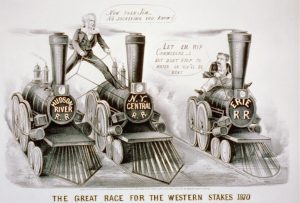
AI: 🛢️ John D. Rockefeller, 🏭 Andrew Carnegie, and 🚂 Cornelius Vanderbilt Compared: The Gilded Age (Part I) 🎩
“Don’t be afraid to give up the good to go for the great.” – John D. Rockefeller
“The man who dies rich, dies disgraced.” – Andrew Carnegie
“What do I care about law? Hain’t I got the power?” – Cornelius Vanderbilt
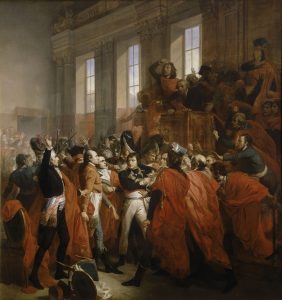
AI: Julius Caesar, Charlemagne, and Napoleon Compared: 🇫🇷 Napoleon, The Revolutionary Military Genius and Master Organizer (Part III)
Napoleon said:
“Impossible is a word to be found only in the dictionary of fools.”
“History is a set of lies agreed upon.”
“Never interrupt your enemy when he is making a mistake.”
“Religion is excellent stuff for keeping common people quiet.”
“From the sublime to the ridiculous is but a step.”
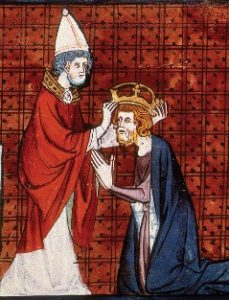
AI: Julius Caesar, Charlemagne, and Napoleon Compared: ✝️ Charlemagne, the “Father of Europe” (Part II)
“He was the most famous and greatest of all the kings who ever lived.” — Einhard, Charlemagne’s biographer (Vita Karoli Magni)
“Right action is better than knowledge; but in order to do what is right, we must know what is right.” – Charlemagne
“Let my armies be the rocks and the trees and the birds in the sky.” – Charlemagne
“Take care of the poor and the widows, for they are the treasure of the Church.” – Charlemagne
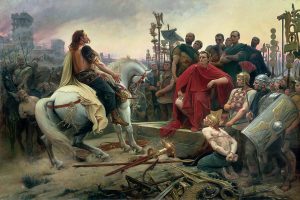
AI: Julius Caesar, Charlemagne, and Napoleon Compared: 🦅 Julius Caesar, The Charismatic Populist and Military Innovator (Part I)
“Alea iacta est.” (The die is cast.)
“Veni, vidi, vici.” (I came, I saw, I conquered.)
“Fere libenter homines id quod volunt credunt.” (Men readily believe what they wish.)
“Omnia Gallia in tres partes divisa est.” (All Gaul is divided into three parts.)
“Et tu, Brute?” (You too, Brutus?)
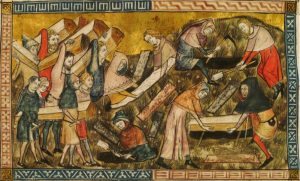
AI: 🐀 Bubonic Plague, 💉Smallpox, and 🫁 Tuberculosis (TB) Compared: Epidemics and Diseases
“How many valiant men, how many fair ladies, breakfast with their kinfolk and the same night supped with their ancestors in the next world! The condition of the people was pitiable to behold. They sickened by the thousands daily, and died unattended and without help. Many died in the open street, others dying in their houses, made it known by the stench of their rotting bodies.” — Giovanni Boccaccio
“The pestilence of the smallpox, which had for so many centuries been filling the grave-yards of the world with countless millions of victims, and leaving the survivors disfigured and blinded, was now to disappear forever from the earth.” – Andrew Carnegie
“Consumption [tuberculosis] is a disease peculiar to the human race, and it has caused more havoc and destruction than all the wars, plagues, and famines combined.” – Robert Koch

AI: Louis Sullivan, William F. Lamb, Fazlur Rahman Khan, César Pelli, and Adrian D. Smith Compared: Skyscraper 🏙️
“It must be tall, every inch of it tall. The force and power of altitude must be in it, the glory and pride of exaltation must be in it” – Louis Sullivan
“The only thing that was unusual about the Empire State Building was that it was done so fast (1 year and 45 days).” – William F. Lamb
“The technical man must not be lost in his own technology; he must be able to appreciate life, and life is art, drama, music, and most importantly, people.” – Fazlur Rahman Khan
“The desire to reach for the sky runs very deep in the human psyche.” – César Pelli
“The design of a skyscraper must be timeless and enduring.” – Adrian Smith

AI: John A. Roebling, Joseph Strauss, Othmar Ammann, Man-Chung Tang, and Michel Virlogeux Compared: Bridges 🌉
“I could construct bridges by an entirely new method, using wire cables… so strong that they would defy the forces of nature.” – John A. Roebling.
“It is my purpose to build a bridge which shall not only be the greatest bridge ever built, but one that will be an object of beauty, simple in its lines, and harmonious with its surroundings.” – Joseph Strauss.
“A great bridge in a great city, although primarily utilitarian in its purpose, should nevertheless be a work of art to which Science lends its aid.” – Othmar Ammann.
“The sun never sets on a Man-Chung Tang bridge.” – Man-Chung Tang.
“Structural mechanics is the basis of engineering. Yes, engineers must have more imagination, more creativity… but they must never lose mathematics and structural mechanics. If they lose that, they lose everything. They’ll become under-architects.” – Michel Virlogeux.
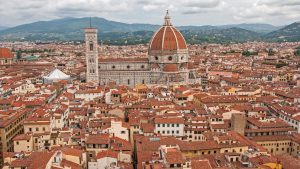
AI: 🛠️ Filippo Brunelleschi (Italian Renaissance, 1377–1446), 🕌 Mimar Sinan (Ottoman Empire, c. 1489/1490–1588), and 🏆 Sir Christopher Wren (British Baroque, 1632–1723) Compared: Architecture
“He put a fresh egg upright on a piece of marble and said that whoever could make it stand up on its own, without touching anything other than the egg, should build the dome.” – Filippo Brunelleschi
“My apprenticeship work is the Şehzade Mosque; my journeyman work is the Süleymaniye Mosque; and my masterpiece is the Selimiye Mosque.” – Mimar Sinan
“Lector, si monumentum requiris, circumspice (Reader, if you seek his monument, look around you).” – Sir Christopher Wren. This is inscribed on a tablet near his tomb in the crypt of St. Paul’s Cathedral.
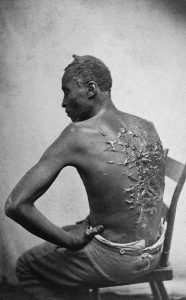
AI: Roman Slaves, Russian Serfs, and American Slaves Compared: Human Tragedy 💔
“Sell your old oxen, your blemished cattle, your blemished sheep, your wool, your hides, your old wagon, your old tools, your old slave, and your sick slave, and if anything else is superfluous, sell it. The head of a family should be a seller, not a buyer.” – Cato the Elder, De Agri Cultura (Illustrating the view of slaves as disposable assets).
“I looked around me – my soul was tormented by the российского пространства (vastness/suffering of Russia).” – Alexander Radishchev, Journey from St. Petersburg to Moscow (1790). Radishchev’s book was a scathing early critique of serfdom, detailing the abuses and hardships faced by serfs, for which he was exiled.
“The worst punishment, in my opinion, was having to be a witness to a whipping… the sight of an old man being whipped so badly that the blood ran was something that could not be forgotten.” – Fountain Hughes (WPA Slave Narratives)

AI: Galileo Galilei, Johannes Kepler, and Christiaan Huygens Compared: The Telescope Revolutionized Astronomy in the 17th Century 🔭
“Philosophy [i.e., science] is written in this grand book, the universe, which stands continually open to our gaze. But the book cannot be understood unless one first learns to comprehend the language and read the letters in which it is composed. It is written in the language of mathematics, and its characters are triangles, circles, and other geometric figures without which it is humanly impossible to understand a single word of it; without these, one wanders about in a dark labyrinth.” – Galileo Galilei
“O telescope, instrument of much knowledge, more precious than any sceptre!” – Johannes Kepler
“The more I observe, the more I see that nature is full of order and laws.” – Christiaan Huygens

AI: Herodotus, Thucydides, and Plutarch Compared: Ancient Greek Historians (Part III, Plutarch: “The Lives of the Noble Grecians and Romans” ⚖️)
“For it is not Histories that I am writing, but Lives; and in the most illustrious deeds there is not always a manifestation of virtue or vice, nay, a slight thing like a phrase or a jest often makes a greater revelation of character than battles where thousands fall…” – Plutarch, Life of Alexander
“An imbalance between rich and poor is the oldest and most fatal ailment of all republics.” – Plutarch
“Painting is silent poetry, and poetry is painting that speaks.” – Plutarch
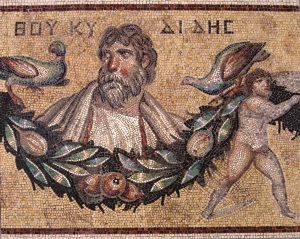
AI: Herodotus, Thucydides, and Plutarch Compared: Ancient Greek Historians (Part II, Thucydides: “The History of the Peloponnesian War” 🗣️)
“Thucydides, an Athenian, wrote the history of the war between the Peloponnesians and the Athenians, beginning at the moment that it broke out, and believing that it would be a great war, and more worthy of relation than any that had preceded it.”- Thucydides
“Our constitution is called a democracy, because it is in the hands not of the few but of the many. Yet our administration, while securing equal justice to all alike in their private disputes, does not ignore the claim of excellence. When a citizen distinguishes himself, then he will be called to serve the state, in preference to his fellows, not as a matter of privilege, but as a reward of merit; and poverty, so far from being a cause of hindrance, is rather a stimulus to exertion.” – Pericles’ Funeral Oration
“Consider, Athenians, my past service and the piety with which I have served the divine. Though fortune now turns against me, my life has been one of devotion to the state. Pity this army, now facing utter ruin, and remember that those who act unjustly, even if they prosper for a time, will ultimately face the wrath of the gods.” – Nicias (The Siege of Syracuse)
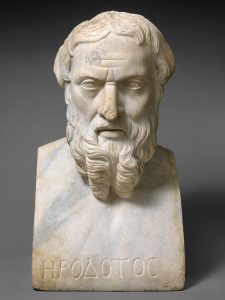
AI: Herodotus, Thucydides, and Plutarch Compared: Ancient Greek Historians (Part I, “The History of Herodotus” or “Persian Wars” 🔎)
“Herodotus of Halicarnassus here displays his inquiry, so that human achievements may not be forgotten in time, and great and marvelous deeds – some displayed by Greeks, some by barbarians – may not be without their glory; and especially to show why the two peoples fought with each other.” – Herodotus
“[The Oracle at Delphi told Croesus:] that if he should send an army against the Persians he would destroy a great empire.”
“[The Oracle at Delphi advising the Athenians:] ‘Yet Zeus grants… a wooden wall, which alone shall be uncaptured, a blessing to you and your children.'”

AI: ♨️ Gilbert N. Lewis, ☮️ Linus Pauling, 💊 Dorothy Crowfoot Hodgkin, ⚗️ Robert Burns Woodward, and 🎥 Ahmed Zewail Compared: Modern Chemists
“Thermodynamics predicts the possibilities, not the probabilities.” – Gilbert N. Lewis. This view reflects his understanding that thermodynamics determines whether a reaction can occur spontaneously (possibility/feasibility) but not how fast it will occur (probability/rate).
“Facts are the air of scientists. Without them, you can never fly.” – Linus Pauling
“I don’t feel that there are any particular difficulties about being a woman in science… except for the interruptions.” – Dorothy Crowfoot Hodgkin
“It has seemed interesting to me that the human mind, looking only at the structure of the molecule, could create such a complex sequence of reactions.” – Robert Burns Woodward.
“Just as geographical exploration enriched humankind’s knowledge of the world, chemical exploration using femtosecond lasers is enriching our knowledge of the world of molecules.” – Ahmed Zewail.
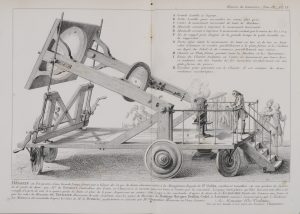
AI: ⚖️ Antoine Lavoisier, ⚛️ John Dalton, 🔡 Jöns Jacob Berzelius, 📑 Dmitri Mendeleev, and ☢️ Marie Curie Compared: Fathers of Chemistry
“Nothing is lost, nothing is created, all is transformed.” – Antoine Lavoisier
“Atoms cannot be seen, but we infer their existence and properties from the ways in which substances behave.” – John Dalton
“Every chemical combination is wholly and solely dependent on two opposing forces, positive and negative electricity, and every chemical compound must be composed of two parts combined by the agency of their electrochemical reaction since there is no third force.” – Jöns Jacob Berzelius
“The periodic law discovered by me, being not merely a summary of facts, but a reliable and fruitful method of investigation, may serve as a means of further progress in the discovery of new elements.” – Dmitri Mendeleev
“Marie Curie is, of all celebrated beings, the only one whom fame has not corrupted.” – Albert Einstein
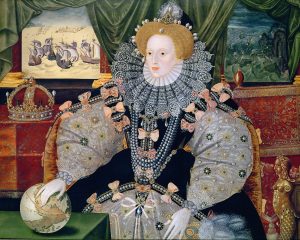
AI: 🇪🇸 Isabella I of Castile (Spain), 🇬🇧 Elizabeth I of England, 🇦🇹 Maria Theresa of Austria, 🇷🇺 Catherine II “The Great” of Russia, and 🇬🇧 Victoria of the United Kingdom Compared: The “Golden Ages” of Queens 👑
Isabella I of Castile was “very powerful, very prudent, wise, very honest, chaste, devout, discreet, truthful, clear, without deceit. Who could count the excellences of this very Catholic and happy Queen, always very worthy of praises.” – Andrés Bernáldez
“My loving people, we have been persuaded by some that are careful of our safety, to take heed how we commit ourself to armed multitudes for fear of treachery; but I assure you, I do not desire to live to distrust my faithful and loving people … I know I have the body but of a weak and feeble woman, but I have the heart and stomach of a king, and of a King of England too, and think foul scorn that Parma or Spain, or any Prince of Europe should dare to invade the borders of my realm.” – Elizabeth I to the Troops at Tilbury
“I found myself without money, without credit, without army, without experience and knowledge of my own and finally, also without any counsel because each one of them at first wanted to wait and see how things would develop.” – Maria Theresa
“I praise loudly, I blame softly.” – Catherine The Great
“The British Empire is a great moral force for good in the world.” – Queen Victoria

AI: General Heinz Guderian, Marshal Georgy Zhukov, and General George S. Patton Compared: Tank Warfare (Part III 💥 General George S. “Old Blood and Guts” Patton)
General George S. Patton Jr.: “A good plan, violently executed now, is better than a perfect plan next week.” This quote embodies Patton’s aggressive, action-oriented approach to warfare. He prioritized speed, decisiveness, and taking the initiative over meticulous planning and caution. It reflects his belief in seizing opportunities and overwhelming the enemy with relentless attacks.
“George Patton is the best damn general we have, but he’s crazy as a bedbug.” (Attributed, possibly apocryphal, but reflecting Eisenhower’s overall view). This captures the essence of Eisenhower’s dilemma: recognizing Patton’s brilliance while being wary of his unpredictable behavior.
“There is a definite ‘luster’ that Patton gives to an army…” (From a letter to General George C. Marshall, reflecting on Patton’s value as a combat leader). This quote acknowledges Patton’s ability to inspire his troops and achieve results. He recognized Patton’s unique talents.
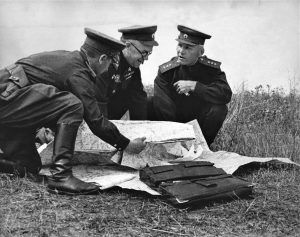
AI: General Heinz Guderian, Marshal Georgy Zhukov, and General George S. Patton Compared: Tank Warfare (Part II 🔥 Marshal Georgy Zhukov)
Marshal Georgy Zhukov: “Victory is achieved through fire and maneuver.” This quote reflects Zhukov’s emphasis on the combined arms approach and the operational art of Soviet “deep battle.” It highlights the need for both overwhelming firepower and skillful movement of forces to achieve decisive breakthroughs and encirclements.
Berlin, 1945: After the German surrender, Patton and Zhukov met several times in Berlin. They reviewed troops together, attended official ceremonies, and even exchanged gifts: Patton gave Zhukov a Colt Peacemaker pistol, and Zhukov gave Patton a Russian pistol.

AI: General Heinz Guderian, Marshal Georgy Zhukov, and General George S. Patton Compared: Tank Warfare (Part I ⚡ General Heinz “Blitzkrieg” Guderian)
General Heinz Guderian: “Speed is the essence of war. Concentrate your armor…do not distribute it in small packets.” This quote concisely captures Guderian’s belief in rapid, decisive maneuver and the core principle of Blitzkrieg. It highlights his focus on overwhelming the enemy with swift, concentrated attacks before they can react effectively.
Winston Churchill: “I speak to you for the first time as Prime Minister in a solemn hour for the life of our country, of our Empire, of our Allies, and, above all, of the cause of Freedom. A tremendous battle is raging in France and Flanders. The Germans, by a remarkable combination of air bombing and heavily armoured tanks, have broken through the French defences north of the Maginot Line, and strong columns of their armoured vehicles are ravaging the open country, which for the first day or two was without defenders.”

AI: Thomas J. Watson, Jr., Seymour Cray, and Steve Jobs Compared: Computer Titans (Part III 🍏 Steve Jobs)
I was lucky to get into computers when it was a very young and idealistic industry. There weren’t many degrees offered in computer science, so people in computers were brilliant people from mathematics, physics, music, zoology, whatever. They loved it, and no one was really in it for the money […] There are people around here who start companies just to make money, but the great companies, well, that’s not what they’re about.
—Steve Jobs
Basically Steve Wozniak and I invented the Apple because we wanted a personal computer. Not only couldn’t we afford the computers that were on the market, those computers were impractical for us to use. We needed a Volkswagen. The Volkswagen isn’t as fast or comfortable as other ways of traveling, but the VW owners can go where they want, when they want and with whom they want. The VW owners have personal control of their car.
—Steve Jobs
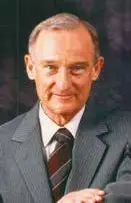
AI: Thomas J. Watson, Jr., Seymour Cray, and Steve Jobs Compared: Computer Titans (Part II 🚀 Seymour Cray)
The New York Times quotes –
“The Cray-1 is said by computer experts to be the fastest computer ever made for scientific purposes, able to carry out in one second the work that would keep a person busy at a desk calculator for a month.”
“Steve Jobs, in a 1985 interview, when asked about the importance of design simplicity, paused, then said with a slight smile, ‘You know, Seymour Cray once said something like, ‘Simplicity is the ultimate sophistication.’ He really understood that. We try to keep that in mind at Apple.'”
“If you were plowing a field, which would you rather use: two strong oxen or 1024 chickens?”
Meaning: Cray’s analogy for his preference for a few powerful processors over many weaker ones (in the context of his time). He believed a streamlined design was more efficient for many scientific workloads.
Cray’s quotes -“One of my guiding principles is don’t do anything that other people are doing. Always do something a little different if you can. The concept is that if you do it a little differently there is a greater potential for reward than if you the same thing that other people are doing.”
